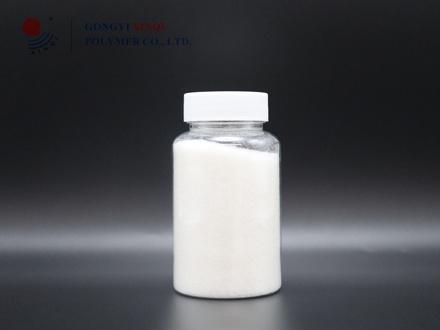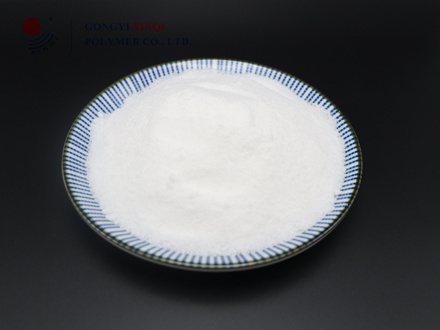Polyacrylamide uses and mechanism of action
Release time:
Jan 17,2024
Polyacrylamide (PAM) is a linear polymer with good thermal stability; it is easily soluble in cold water, but has limited solubility in organic solvents. Polyacrylamide has a series of excellent properties, such as flocculation, thickening, surface activity, sedimentation, filtration, thickening, retention, purification, etc.
Polyacrylamide is divided into non-ionic polyacrylamide and ionic polyacrylamide according to whether it has ions in the molecule. Ionic polyacrylamide also includes anionic, cationic and amphoteric polyacrylamide.
Nonionic polyacrylamide is an acrylamide homopolymer, which is mainly used in papermaking as reinforcing agent, retention agent, drilling dewatering agent, tertiary oil recovery and oil displacement agent, etc. The amide group in nonionic polyacrylamide can be converted into a polymer containing carboxyl groups through partial hydrolysis to become anionic polyacrylamide.
Anionic polyacrylamide is mainly used for sewage treatment of neutral suspensions dominated by inorganic solids. When 0.25 mg/L anionic polyacrylamide is added to the primary wastewater, the suspended solids and BOD (biological oxygen demand) removal rates can reach 66% and 23% respectively, but it is poor when used in acidic environments.
Cationic polyacrylamide can neutralize negative charges and bridge flocs, and has a thickening effect in biological sludge treatment, which is beneficial to the formation of large flocs without adhering to the filter cloth.
The amphoteric polymer has cationic and anionic groups in the molecule. Its structure determines its use in a wide range of pH conditions. In particular, it improves the dehydration of sludge and reduces the moisture content of the sludge filter cake.
Polyacrylamide can be synthesized into polymers of different molecular weights as needed, and can be modified into polyelectrolytes with different ions. Therefore, it is widely used, and its dosage accounts for more than 80% of polymer flocculants. Polyacrylamide exhibits hydrophilicity and solubility due to its amide group forming hydrogen bonds with water, resulting in association. The mechanism of action of polyacrylamide is the same as that of other polymer flocculants. For dispersions in water, polyacrylamide mainly exhibits adsorption bridging and electrical neutralization.
Adsorption bridging effect:
It is a characteristic of high molecular polymers to have a bridging effect. Because they have a high degree of polymerization, they appear as long linear molecules in aqueous solutions, and can have a strong adsorption effect on solid particles with the help of van der Waals attraction, hydrogen bonding and electrostatic attraction. For polyacrylamide, it mainly relies on hydrogen bonds to adsorb particles in suspension. While adsorbing, solid particles can also directly adhere to each other. The polymer molecules that have adsorbed solid particles are entangled and cross-linked with each other to form Complex aggregates. The adsorption bridging effect requires the polymer to have sufficient molecular chains. The flocculation effect increases as the molecular weight increases, but its solubility performance decreases as the molecular weight increases.
Electroneutralization:
Polymer flocculants can neutralize the diffusion layer ions on the colloid surface, destroying the stability of its galvanic layer, causing particles to settle. Adsorption bridging and electrical neutralization have always been recognized as the theoretical basis for the action of polymer flocculants. Each chain of the polymer contains thousands of ionic charge sites, which can neutralize the surface charge of suspended colloidal particles, and at the same time form hydrogen bonds to "bridge" between suspended particles, allowing the suspended matter to immediately adhere to the polymer. On the material chain, when the agglomerated particles are large enough, they will settle, and their settling can be completed within a few minutes.


Related News
Nov 06,2025
Nov 06,2025
polyacrylamide suppliers in egypt
Sep 28,2025
polyacrylamide suppliers south africa
Sep 28,2025
polyacrylamide suppliers in india
Sep 28,2025
Polyacrylamide Supplier in Malaysia
Sep 28,2025

